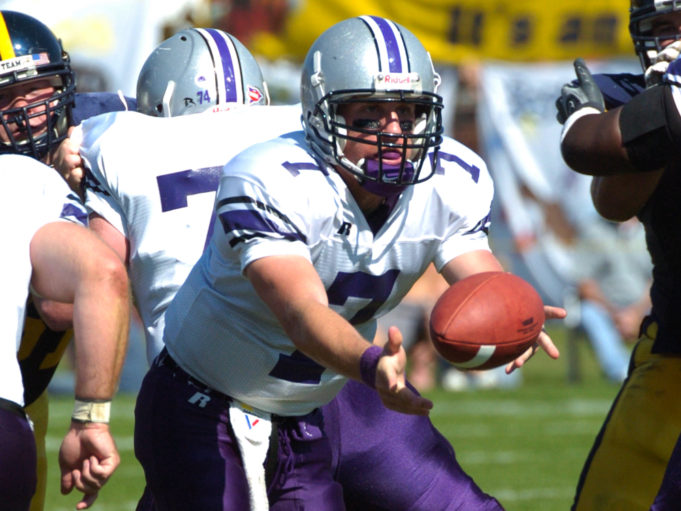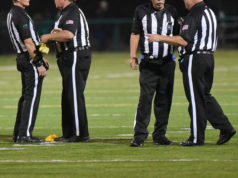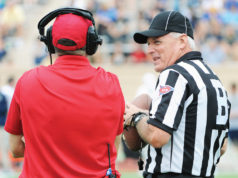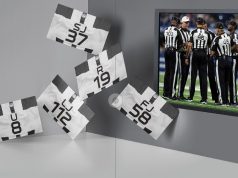When San Antonio Trinity University used 15 backward passes to score the winning touchdown on the last play of an October 2008 game against Millsaps College, the film showed up on more than just sports highlight shows. The play took a full minute, nine different players were involved and it covered 61 yards.
The play may have set a record for backward passes; it surely surpassed the 1982 game in which California defeated Stanford on the last play of the game that included five backward passes and covered 55 yards. That play also included the unwitting participation of the Stanford band running interference for the California runners as they snaked their way through the band on the way to a touchdown and victory. The Stanford band, thinking the game was over, had rushed onto the field prematurely.
At least one non-sportscaster (and probably dozens of regular sports commentators) used the term “lateral” when viewing the video. As all good officials will tell you, there is no such thing as a lateral; the correct term is backward pass. It is annoying that people, especially reporters and announcers, continue saying, “It’s a lateral, it’s a lateral!” Even worse are those who gush, “It’s a backward lateral!” or, “That was a forward lateral!”
The word lateral (in terms of a thrown ball) does not appear in either rulebook. Every ball thrown in a game is either thrown forward or backward, period, despite the dictionary definition of lateral. Thus the misnomer for a backward or forward pass that is approximately parallel with the line of scrimmage. The cry for a forward or backward lateral is something that most officials will hear sometime in their career. Any fan listening to a broadcast will hear it quite often; it seems that there isn’t an announcer on the air that knows the term shouldn’t be used.
Officials spend hours in pregame conferences discussing possible game situations. One that most assuredly needs to be covered is the forward and backward pass play. Officials have to make a determination as to whether a pass had been thrown forward or backward. If backward, the covering official has most likely indicated that by punching his arm toward the offensive team’s goal. The determination whether the pass was forward or backward is based on where the ball left the thrower’s hand and where it was first touched by a player, offensive or defensive, the ground or (in NCAA) an official.
That is extremely important and can be a game-changer. If the ball hits the ground, whether it was touched by either an offensive or a defensive player and it was determined to have been thrown forward, the ball is declared dead and ruled an incomplete pass. If it has been determined to have been originally thrown backward, the ball remains live. A player from either team may pick up the ball and run with it.
Wing officials have to be in position and ready to rule on whether a pass is forward or backward on every pass play. While some pass plays that are forward or backward are very obvious, a problem can occur when the quarterback turns and throws quickly toward a sideline. Such a pass may be thrown laterally in the dictionary sense, but for football situations, it’s going to be ruled either forward or backward.
Some teams are now dropping a tackle (ineligible by number, not position as he’s stationed on the end of the line) into the backfield and throwing a screen pass to him. If the pass is ruled forward, the tackle should be ruled ineligible by number and a flag thrown for illegal touching. If it was backward, since all players are eligible to receive a backward pass, the play is legal. The legality of the receiver in that case is critical as he has an ineligible number.
We may never see a day that announcers, coaches, players and others cease referring to backward passes as laterals. But officials can certainly work hard at getting the calls correct.
What's Your Call? Leave a Comment:
Note: This article is archival in nature. Rules, interpretations, mechanics, philosophies and other information may or may not be correct for the current year.
This article is the copyright of ©Referee Enterprises, Inc., and may not be republished in whole or in part online, in print or in any capacity without expressed written permission from Referee. The article is made available for educational use by individuals.


















